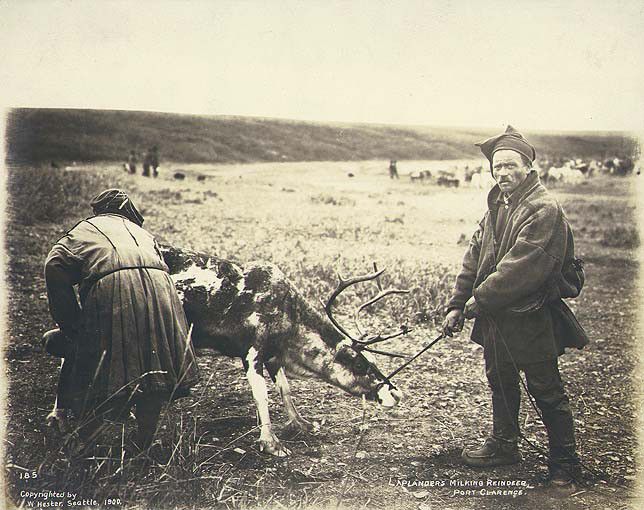This article is brought to you by Datawrapper, a data visualization tool for creating charts, maps, and tables. Learn more.
How 538 reindeer traveled from Norway to Alaska in 1898
Hi, this is Anna. At Datawrapper, I’m responsible for the maps you can find in our choropleth and symbol map editor. I listen a lot to the radio and Swedish radio in particular. Right before Christmas, I heard a program about how the Scandinavian reindeer[1] ended up in Alaska. This story intrigued me. Since then I wanted to make a map describing the long journey from northern Norway to Alaska. Here it is!
During the Gold Rush in Alaska in the late 1800s, the gold mining led to the destruction of salmon streams in the Alaskan Nome River. Salmon was the main source of food. People started starving.
To prevent starvation and support the Alaska Inuit to establish another self-sustaining way of living, the government looked to a part of the world with a similar climate: Scandinavia. There, the Sámi people had kept reindeer for food and furs successfully for hundreds of years. So the U.S. government invited them (and their reindeer) from Scandinavia to teach the Alaska Natives to do the same. 137 Sámi accepted the invitation.
In February 1898 the ship Manitoba, carrying 538 reindeer, their herders and families and a 3 months supply of lichen (to feed the reindeer), set sail in Alta 1, Northern Norway with New York as the destination. From New York 2, the expedition continued the 4600 kilometer distance by train to Seattle 3, where a ship was scheduled to bring them to Alaska.
When the Manitoba Expedition finally reached Nome 4, the river had recovered – and so had the salmons. The most urgent threat of starvation was gone. But the 16000 kilometers traveled by the 200 remaining reindeer and their herders weren’t for nothing: They still taught the Alaska Inuits how to keep reindeer.
The Sámi herders had a contract of two years, and most of them went back to Scandinavia afterward. But some of them stayed, kept herds and developed a transportation system. The reindeer transported material for the army, equipment for the gold miners and delivered U.S. mail in Alaska before airplanes took over. 5

Two people from Lapland (Finland) wearing traditional dress milking reindeer in Port Clarence, Alaska, 1900.
The initial intention of the reindeer project was to support the American indigenous people. In 1937 the “Reindeer Act” passed. It states that Native Inuits have exclusive rights to own and work with reindeer, and the Sámi people were forced to sell their reindeer herds (for a very low price) to the government.
Nowadays there are around 20,000 reindeer in Alaska. Most of them live wild among the North American caribou herds.
Thanks for reading! Like always, you can hover over the map above and click on “Edit this chart” in the top right corner to see how I created the map (hint: I used the GeoJSON import explained in this Academy article). Next week, our CTO Gregor will create another Weekly Chart. See you then!
-
Reindeer and caribou are the same species, but caribou is native to North America and was never domesticated. Reindeer can be found in Europe and Asia, are slightly smaller and were domesticated 2000 years ago.↩︎




Comments